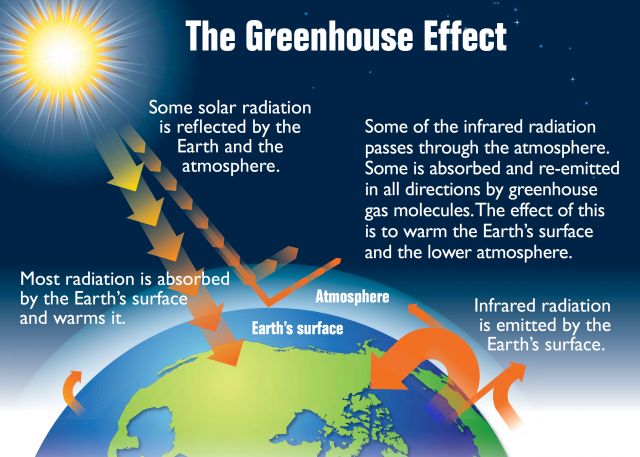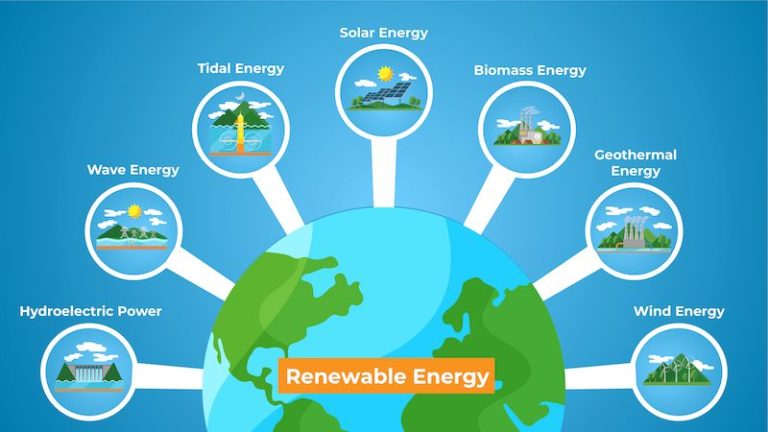Why Is Light Important To The Earth?
Light is essential to life on Earth. It enables everything from photosynthesis in plants to vision in animals. Without light, life as we know it could not exist. This article will explore several key reasons why light is important to Earth. The major topics that will be covered include photosynthesis, climate regulation, circadian rhythms, vitamin D synthesis, vision, agriculture, solar power, and culture. Understanding why light is crucial for biology, climate, energy, and human activity illuminates just how fundamental light is to our planet.
Photosynthesis
Photosynthesis is the process by which plants, algae, and some bacteria use sunlight, carbon dioxide, and water to produce energy-rich carbohydrates and oxygen. This process converts light energy from the sun into chemical energy that can be used by organisms. Photosynthesis is critical to life on Earth because it provides the oxygen and organic molecules that most organisms depend on.
During photosynthesis, plants absorb light, usually from the sun, into their leaves. The energy from the light is transferred to chlorophyll, the green pigment in plant leaves and stems. Chlorophyll absorbs certain wavelengths of light and reflects others, making the plants appear green.
The light energy is used to split water molecules, producing oxygen gas, electrons, and hydrogen ions. These electrons and hydrogen ions are used to convert carbon dioxide into glucose, a simple sugar. The glucose provides plants with the energy they need for growth and reproduction. The oxygen gas is released into the atmosphere through the plant leaves.
Without photosynthesis, the carbon dioxide levels in our atmosphere would rise dramatically, oxygen levels would fall, and most organisms would not survive. Thanks to this process, plants are able to convert the sun’s energy into sustenance for nearly all life on Earth.
Climate Regulation
Light plays a critical role in regulating the Earth’s climate. The sun’s light interacts with greenhouse gases like carbon dioxide, methane and water vapor in the atmosphere. These gases allow visible light to pass through but trap infrared light emitted from the Earth’s surface. This greenhouse effect helps warm the planet to comfortable temperatures for life.
However, the amount of sunlight reaching and being reflected by the Earth’s surface also influences global climate. Light-colored surfaces like ice and snow have a high albedo – they reflect more sunlight. Dark surfaces like oceans absorb more light and convert it to heat. Changes in surface albedo from melting ice sheets and sea ice affect how much radiation is absorbed vs reflected, altering the planet’s energy balance.
Human activities that increase greenhouse gases or change albedo amplify the impacts of light on climate. Understanding these complex interactions between light and climate is key to modeling and predicting climate change.
Circadian Rhythms
Light is crucial for regulating circadian rhythms in humans and animals. Circadian rhythms are the roughly 24-hour cycles of biological processes that occur in living organisms. These cycles are endogenously generated but are synchronized to the 24-hour day-night cycle by external cues like sunlight.
When sunlight hits the retina, it triggers the suppression of melatonin production. Melatonin is a hormone that helps regulate sleep. Its levels naturally rise in the evening and remain elevated at night, promoting sleep. When morning light is detected, melatonin production is halted, nudging us to wake up.
Light exposure during the day also helps entrain the timing of other circadian rhythms, like core body temperature fluctuations, hormone secretion, and metabolic cycles. Proper synchronization of these rhythms is critical for physical and mental health. Disruption of circadian rhythms has been linked to increased risk for depression, sleep disorders, diabetes, obesity, and cancer.
Vitamin D Synthesis
Sunlight enables vitamin D production in the skin through a photochemical process. When UVB rays from sunlight hit the skin, they convert cholesterol in the epidermis into previtamin D. Previtamin D is then transformed into vitamin D3, which is transported to the liver and kidneys where it is converted into active vitamin D.
Vitamin D is essential for calcium absorption and bone health. Without enough sun exposure, vitamin D deficiency can occur, leading to soft bones, bone pain, and increased risk of fractures. Children need vitamin D for proper bone development and growth. Given the importance of vitamin D for overall health, sunlight exposure is vital to activate vitamin D synthesis in the skin.
Vision
Light is essential for vision and our ability to see. Human and animal eyes contain light-sensitive cells called photoreceptors that detect light and convert it into signals that are sent to the brain. Photoreceptors consist of rods, which perceive black, white and gray, and cones, which detect color.
When light enters the eye, it passes through the cornea and lens which focus it onto the retina at the back of the eye. The retina contains the photoreceptors. When light hits the photoreceptors, they trigger neural impulses that travel along the optic nerve to the visual cortex in the brain, creating the sensation of sight.
The different wavelengths of light correspond to different colors. Cones are responsible for color vision. There are three types of cones, each sensitive to blue, green or red light. The combination of signals from all three types of cones allows us to perceive the full spectrum of color.
Without light to activate the photoreceptors, vision would be impossible. Light makes it possible for humans and animals to see their environment, detect dangers, find food and mates, and perform detailed visual tasks like reading, driving and craftwork. Vision and light are intrinsically linked.
Agriculture
Light is essential for agriculture and food production. Plants need light for photosynthesis, which allows them to convert light energy into chemical energy that fuels plant growth. The quality, intensity, and duration of light all impact plant growth and crop yields. Different crops require different light conditions – for example, lettuce and spinach grow best in full sun while broccoli and cauliflower prefer partial shade.
Light enables farmers to grow crops year-round, even in cold climates, through the use of greenhouses which provide additional light. Supplemental lighting in greenhouses and indoor vertical farms allows farmers to precisely control light levels and optimize conditions for each crop. Greenhouses use transparent materials like glass or plastic to allow sunlight through while trapping heat inside. Artificial lights like high intensity discharge lamps or LEDs can provide the intensity and spectrum of light that plants need. With sufficient light, crops can be grown indoors regardless of outdoor conditions.
The seasonal changes in daylight hours, which are driven by the earth’s tilt on its axis, provide farmers with signals for planting and harvesting crops at optimal times. Photoperiodism affects certain crops – long summer days signal some plants to flower and fruit, while short winter days lead others to become dormant. By leveraging knowledge of plant photoperiodism, farmers can maximize agricultural productivity.
In summary, light enables agriculture by powering photosynthesis for plant growth, allowing climate control through greenhouses, and providing seasonal cues for planting and harvesting. Without adequate light, we simply could not grow enough food to feed the global population. Our entire agricultural system is dependent on light from the sun.
Solar Power
Sunlight is the most abundant energy source on Earth. The sun radiates more energy to the earth in one hour than the world uses in a whole year. Solar power harnesses the sun’s energy and converts it into electricity through the use of photovoltaic cells. When sunlight hits these cells, it excites the electrons and causes them to flow, generating an electrical current that can then be used to power homes, businesses, and more.
Solar power is an incredibly important renewable energy source that does not release any greenhouse gases or toxic pollutants. Switching to solar energy can significantly reduce a region’s carbon footprint. Solar panels can be installed on rooftops or set up in large-scale solar farms and require very little maintenance. The cost of solar has dropped dramatically in recent years, making it more affordable and accessible. Solar energy holds great potential to help address global energy needs in a sustainable manner, especially as storage technologies continue to advance.
Without sunlight, solar power would simply not be possible. The abundance of light energy that the sun provides is essential for generating this clean, renewable electricity through photovoltaics. Solar power allows society to harness the natural light energy that reaches Earth in order to reduce reliance on fossil fuels and build a more sustainable future.
Culture
Light has profoundly shaped human culture, society, and architecture throughout history. The presence and absence of light impacts our moods, activities, and designs. Many cultural and religious traditions are built around daylight, seasons, and stars.
Before artificial lighting, daylight cycles dictated people’s sleep and wake times. Work and socializing occurred during the day, while nights were for rest. The advent of lighting allowed humans to extend their active hours after dark. Yet circadian rhythms still tie us to the daily light/dark cycle.
With sunlight comes shadow. Architects design buildings and public spaces using light, shadow, and transparency for aesthetic beauty and function. Stained glass windows in medieval cathedrals transformed incoming light into dazzling artworks. Sunlight streaming into a modern atrium creates warmth and openness.
Solstices and equinoxes mark important cultural and spiritual days across many societies. People gather to celebrate seasonal festivals tied to the shifting sunlight throughout the year. Even as our lives become removed from nature, we still feel light’s profound effects on our bodies and psyches.
Conclusion
In summary, light is incredibly important to life on Earth in numerous ways. It enables plants to produce energy through photosynthesis, which supports nearly all life by providing food and oxygen. Light also regulates the climate by heating the planet. Animals and humans depend on light signals to set circadian rhythms that control sleep cycles. UVB light facilitates vitamin D production in many organisms, which is essential for bone health. Vision relies entirely on light enabling organisms to see. Agriculture depends on sufficient sunlight for crop growth. Light also enables solar power, a renewable energy source. Additionally, light has shaped cultures and societies through religion, architecture, and the arts. Clearly, light is a fundamental aspect of life on Earth that supports biological, environmental, behavioral, practical, and cultural needs.







